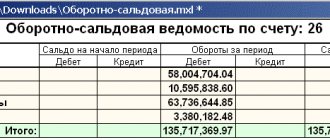The founders, along with the formation of the authorized capital (AC), can provide their own organization with financial assistance. The contribution is made to increase the enterprise's funds, to create reserve and additional capital, or to cover losses incurred in the course of business. Documentation of the operation is a prerequisite. In the article we will tell you how repayable financial assistance from the founder is carried out, and we will give examples of postings.
The actions of the founder must be based on the decision of the general meeting of founders. Compliance with a quorum is determined by the provisions of the Charter. The founder's intention to make a contribution must be approved by the majority of participants and reflected in the minutes of the general meeting. The sole participant must indicate the intention in the decision.
Types of founder contributions
There are several reasons why the owner of an enterprise can provide financial assistance as a founder or individual. To improve the economic condition of the enterprise or perform a one-time transaction, the founder makes several types of targeted contributions.
| Purpose of the contribution | Operation description |
| Contribution to increase the capital | Made on the basis of the decision of the founders with registration of changes in the Federal Tax Service |
| Contribution to increase net assets | Receipt does not increase the amount of the authorized capital |
| Transfer of funds to replenish reserve capital | Cash becomes the property of the enterprise, the founder has the right to receive dividends |
| Contribution in kind | Proceeds from the founder in the form of property are used to replenish additional capital |
| Providing a repayable loan | The contribution is formalized by an agreement with a repayment condition - indicating a limited period for using funds |
Funds transferred to the organization from the founder, provided they are properly executed, are not income of the enterprise. The transfer of funds to the enterprise is documented. In the absence of an agreement between the founder and the organization, income arises for a legal entity upon receipt of funds, and for an individual - upon return of funds or the equivalent of contributed property.
Concept
Transferred financial assistance from the founder includes:
- rights to movable and immovable property;
- intellectual property;
- cash;
- works and services;
- securities.
As goals of financial assistance (there are no restrictions at the legislative level), an enterprise can designate:
- increase in current assets;
- coverage of incurred losses;
- payment of wages to employees;
- repayment of obligatory payments to the budget;
- replenishment of the reserve;
- acquisition of assets.
Article 209 of the Civil Code of the Russian Federation (clause 2) allows the company, after receiving money into ownership, to independently dispose of it.
Contributions of the founder to the current account
The founder of the enterprise can replenish the current account with cash or by wire transfer. Replenishment of the current account with cash is carried out through the cash desk of the enterprise. The founder does not have the right to directly deposit cash into current accounts, except in cases stipulated by law. The cashier must:
- Accept funds on the basis of the PKO, indicating the details of the person, amount, and basis for the contribution.
- Attach a copy of the basis document to the cash order.
- Transfer funds to your current account. When depositing cash, the purpose of the payment is important. It is necessary to exclude the definition of a contribution as revenue.
Transfer of funds from the personal account of the founder is allowed. When making a non-cash transfer, the purpose of payment of the payment order must indicate the basis for the transfer, otherwise the receipt of funds can be treated as an advance on a taxable transaction.
Founder's contribution to open an account
A current account is opened after registration of the organization. At the time of opening the account, the company does not have funds received in the form of income. Payment of the bank commission is carried out at the expense of the founder. The best option to confirm the basis for the receipt of funds from the founder is a loan agreement. Funds are deposited through the company's cash desk.
The founder registered Yunost LLC. After opening, the company needed to open a bank account. The commission for opening an account was 500 rubles. Due to the lack of funds for current needs, a loan agreement was drawn up with the founder for the amount of the commission.
The following entries are made in accounting:
- The receipt of funds to the cash desk is taken into account: Dt 50 Kt 66 in the amount of 500 rubles;
- The deposit of the amount to the bank is reflected: Dt 51 Kt 50 in the amount of 500 rubles;
- The amount of the commission is taken into account as part of other expenses: Dt 91 Kt 51 in the amount of 500 rubles.
The loan is repaid from the cash desk or by bank transfer to the founder’s account.
How to reflect financial assistance in accounting
Important
The accounting procedure for repayable financial assistance from the founder in the form of a loan depends on the period of provision of funds and the account to which they will be transferred. For loans for a period of no more than a calendar year, the account “Settlements for short-term loans and borrowings” (66) is used, for the rest - the account “Settlements for long-term loans and borrowings” (67). Funds are posted to the debit of account 50 “Cash” or 51 “Cash accounts”.
Postings for accounting for financial assistance in the form of a repayable loan:
- D51 (50.52) K66 (67) – receipt of a loan issued by the founder;
- D66 (67) K51 (50.52) – return of financial assistance to the founder (loan).
Free transfer of financial assistance Free transfer of financial assets or property is the most convenient and applicable way for founders to provide real assistance to an enterprise.
Contribution of the founder to increase the enterprise's NAV
Maintaining the level of net assets of the enterprise is a mandatory condition for conducting the company's activities. When the value of the net asset value decreases below the value of the capital company, risks arise that the Federal Tax Service will initiate the closure of the organization . The NAV value is an important indicator for assessing the balance sheet structure when receiving investments. The amount is increased from various sources, one of which is the founder’s contribution to increase the authorized capital or issued in the form of a repayable loan.
When concluding a loan, an agreement is drawn up between the company and the person. The transfer of the founder's funds for temporary use is carried out free of charge or with an indication of the interest received by the person as a result of the loan. If there is no information about the frequency of interest payments, payment will be transferred monthly.
| Increase in capital | Recording a transaction in accounting registers | Founder's contribution to increase the NAV | Transaction Record |
| The increase in the size of the authorized capital is reflected | Dt 75 Kt 80 | Cash inflow | Dt 50 (51) Kt 83 |
| Founder's contribution reflected | Dt 51 (50) Kt 75 | Receipt of contribution by property | Dt 10, 41, 08 Kt 83 |
Can an LLC member provide support to the organization?
The contribution of funds to the benefit of the owner's own enterprise is a legal business transaction.
The owner (or co-owner) can improve the financial position of his own enterprise in the following ways:
- draw up a deed of donation;
- contribution to the company's current assets without changing shares;
- contribution to the authorized capital with a change in shares;
- repayment by applying for a loan, with or without interest - providing an interest-free loan.
Conventionally, these methods of providing financial assistance can be divided into gratuitous (donation and replenishment of working capital) and paid (loan and contribution to the authorized capital).
Each of these methods has its own characteristics, pros and cons.
Contributions of the founder to create a reserve fund
The creation of a reserve fund is carried out at the expense of retained earnings of organizations. Accounting for the funds of the fund is carried out in account 82. For joint-stock companies, the formation of a fund is a mandatory condition for conducting business. LLC creates reserve capital on a voluntary basis.
To replenish the reserve fund, financial assistance from the founder is sent to the other income account. Further, the net profit received at the end of the year will be used to form a reserve fund.
| the name of the operation | Recording a transaction in accounting registers |
| Reflection of receipt of assistance from the founder | Dt 50 (51) Kt 91/1 |
| Year end reflected | Dt 91/1 Kt 99 |
| Net profit reflected | Dt 99 Kt 84 |
| The formation of a reserve fund is reflected | Dt 84 Kt 82 |
The reserve fund funds are spent for the purposes specified in the Charter, including the payment of dividends to the founders in the absence of profit.
Documentation of donation of property
The provision of gratuitous financial assistance must be recorded in documents. The exception is cases of transfer of funds to non-profit organizations that do not pursue the goal of using the funds for business activities. In other cases, the company must have the following documents on hand:
- agreement with the party receiving financial assistance;
- copies of accounting registers on the acceptance by beneficiaries of amounts for accounting;
- confirmation of the intended use of the funds received.
The list contains the main papers that are necessary to formalize the act of charity. In some cases, additional documents may be required.
Founder's contribution in kind
The founder has the right to contribute property to the ownership of the enterprise, provided that the possibility of contributing property is documented. State registration is not required for the operation of a contribution to property. The contribution is made subject to the following conditions:
- The ability to contribute property must be provided for by the main constituent document - the Charter.
- The decision to contribute an asset is made by the general meeting of founders with the consent of at least 2/3 of the votes.
- Approval of the transaction must be reflected in the minutes of the general meeting.
- The contribution of property does not affect the amount of the founder’s contribution to the management company.
The receipt of property is carried out at market value. To confirm the value of the property, you must order an independent appraisal. The transfer is made by deed. When conducting transactions with property, an important condition is the authenticity of documents and execution of the transfer. The asset is accounted for in account 83 as part of additional capital.
Postings with gratuitous financing
The process of gratuitous transfer of property (including money) must be documented by both the receiving and the giving party.
Inaccuracies in accounting can lead to violations of tax laws, which entails liability. Typical account assignments reflecting the charity process
| Dt | CT | Characteristics of a business transaction |
| 76 | 51 | Free financial assistance provided |
| 76 | 41 | Goods donated for charitable purposes |
| 76 | 04 | Securities have been transferred to the ownership of another company |
| 91 | 76 | Expenses in connection with the donation of property are included in other |
| 91 | 68 | The amount of VAT charged on the transferred goods |
| 99 | 68 | The tax liability is reflected from the amount of funds transferred free of charge |
To account for the transfer of property, current account 76 is used, which is debited with accounts containing information about the assets donated. After which, the amounts of expenses are written off as a debit to account 91, and also, if necessary, reflect the amount of tax liabilities.
Let's consider typical operations carried out by an enterprise accountant when receiving financial assistance.
Account assignments made when accepting a gift for accounting
| Dt | CT | Characteristics of a business transaction |
| 51 | 98.2 | Funds received free of charge |
| 60 | 51 | The money was used to pay for purchased supplies |
| 10 | 60 | Materials accepted for accounting |
| 98.2 | 91.1 | Part of the financial assistance amount is included in non-operating income |
| 66 | 51 | Funds of gratuitous support for loan repayment were transferred |
| 68 | 99 | Tax asset accrued on profit from financial assistance |
| 19 | 60 | Accepted for accounting for VAT on excisable goods received free of charge |
After using financial assistance funds, they must be reflected in the item of non-operating income.
A cash loan from the founder involves the transfer of the required amount on the condition that the company will return the funds received upon completion of the agreed period. The relationship between the parties is based on a documentary basis. After discussing the conditions, a repayable financial assistance agreement is drawn up (a sample of which is given below), which reflects issues of interaction between the parties. The key point is that the executed paper must comply with the requirements of the Civil Code of the Russian Federation.
We invite you to read: Interior doors of proper quality must be replaced or returned
Agreement on repayable financial assistance from the founder - sample
The loan issued by the founder of the LLC is of two types - with interest and without interest. If interest is required, the agreement specifies this parameter. If it is absent, the key rate in effect at the time of payment is taken. If the percentage is not specified in the agreement, when making a transaction, you must clarify the current rate at the time of payment.
The situation is different when the loan does not involve interest payments. Here, the repayable financial assistance agreement contains a mention of the absence of interest charges for the use of funds. In this case, the money received by the LLC is not included in the organization’s profit. Therefore, they are not subject to tax. In addition, no tax is charged on material benefits that appeared due to the absence of a tax rate.
In practice, founders prefer to choose this method of assistance, because it does not create a burden on the company and increases the chances of quickly eliminating the financial problem that has arisen.
Special attention should be paid to the issue of reflecting the transfer of funds in accounting. Let's look at how repayable financial assistance postings are organized:
- For loans issued for a short period (up to a year), account 66 is used.
- If money is issued for a longer period (from a year), account 67 is used.
Depending on the method of receipt of funds, the mentioned accounts correspond with the accounts on which the receipt of finance is taken into account, namely from 50 to 52. Thus, the entries when receiving temporary financial assistance from the founder have the following form:
- Obtaining a loan for up to a year - D/C 51 (50, 52), 66.
- Obtaining a loan for a year or more - D/C 51 (50, 52), 67.
After the money is returned, the following entries are used: D/C 66 (67), 51 (50.52).
Providing free assistance to the founder with a share of less than 50% of the authorized capital
Along with paid assistance, founders can make gratuitous contributions. The transfer of property by the founder when he owns more than 50% shares in the management company is not taxed in accordance with the provisions of clause 11 of Art. 251 Tax Code of the Russian Federation. The status of the founder (legal or individual) does not matter.
Free assistance from the founder if he owns a 50% or smaller share in the management company is subject to income tax in accordance with clause 8 of Art. 250 Tax Code of the Russian Federation. The tax base is the market valuation of the transferred property.
Providing founder assistance for different tax systems
Help from the founder, as a result of which no taxable object arises, does not entail payment of tax, regardless of the chosen system. The provision of assistance with property does not become a taxable object if the objects are used to conduct business for more than a year (Article 251 of the Tax Code of the Russian Federation). When transferring property to a third party during a year of operation, the enterprise becomes subject to taxation under the income tax or single tax under the simplified tax system.
If the obligation to pay tax arises, the enterprise pays:
- Under OSNO – income tax.
- Under the simplified tax system and unified agricultural tax there is a single tax.
- For UTII - income tax or single tax, if the enterprise has declared the simplified tax system along with imputed income.
Contributions of funds in the form of a loan, additional capital, creation of a reserve fund, or property are not subject to VAT taxation. Contributions from the founders are not payments related to the sale and relate to investment activities.







